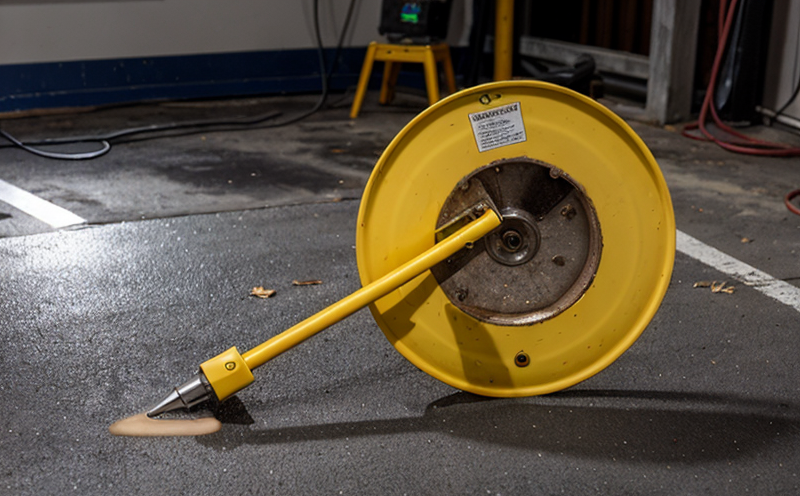ISO 13588 Phased Array Ultrasonic Testing of Welds
The ISO 13588 standard specifies phased array ultrasonic testing (PAUT) methods for the inspection of welds. This advanced non-destructive evaluation technique is particularly valuable in ensuring the integrity and reliability of welded components used across various sectors, such as aerospace, automotive, medical device manufacturing, and energy infrastructure.
Phased array technology allows for highly precise and versatile inspections by manipulating sound waves through a multi-element transducer. This flexibility enables testing from multiple angles without physically moving the probe, which is especially useful in complex geometries like those found in welds. The method can detect flaws such as cracks, voids, porosity, and inclusions that could compromise structural integrity.
The ISO 13588 standard outlines specific parameters for PAUT, including probe selection, testing conditions, and data interpretation. These guidelines ensure consistency and reliability across different facilities performing this type of inspection. The test setup typically involves coupling the ultrasonic transducer to the surface of the weld using a suitable coupling agent, such as water or oil.
Preparation of the specimen is critical for accurate PAUT results. This includes cleaning and conditioning the surface of the weld, ensuring that it is free from contaminants like dirt, rust, or grease, which could interfere with sound wave propagation. Calibration of the ultrasonic equipment must also be performed before testing to ensure accuracy.
Data acquisition during PAUT involves collecting signals that are then analyzed for potential flaws in the weld structure. Advanced signal processing techniques, such as beamforming and focusing, allow for more detailed examination of the test area. The results can be presented graphically or numerically, providing a comprehensive overview of the weld's condition.
Compliance with ISO 13588 is crucial for industries that require stringent quality control measures. This standard ensures that inspections are conducted consistently and to high standards, reducing the risk of defective products reaching the marketplace. For example, in aerospace manufacturing, where safety and reliability are paramount, adherence to this standard helps prevent failures due to undetected flaws.
The phased array ultrasonic testing method is not only precise but also efficient, allowing for rapid inspections of large structures or components with complex geometries. Its ability to provide real-time imaging capabilities further enhances its utility in modern manufacturing processes.
In summary, ISO 13588 PAUT of welds is a critical tool for ensuring the integrity and reliability of welded components across various industries. By adhering to this standard, manufacturers can improve product quality, enhance safety standards, and ensure compliance with regulatory requirements.
Why It Matters
The ISO 13588 Phased Array Ultrasonic Testing (PAUT) of welds is essential for several reasons. Firstly, it ensures the highest level of quality assurance in welded components, which are crucial structural elements in many industries. Welded joints must be free from defects that could lead to catastrophic failures if undetected.
Secondly, PAUT allows for rapid and accurate inspections, reducing production downtime and improving efficiency. This is particularly important in high-demand environments where timely quality checks can significantly impact operational costs.
Thirdly, compliance with ISO 13588 ensures that inspections are conducted consistently across different facilities. This consistency is vital for maintaining the integrity of a company's manufacturing processes and ensuring that all products meet stringent quality standards.
Finally, PAUT helps in meeting regulatory requirements and industry-specific standards. For instance, aerospace manufacturers must comply with rigorous safety regulations. Adherence to ISO 13588 ensures that their inspection methods are up to these standards, thereby safeguarding public safety.
Why Choose This Test
Selecting ISO 13588 Phased Array Ultrasonic Testing (PAUT) for weld inspections offers several advantages. The method is highly versatile and can be adapted to various welding processes, making it suitable for a wide range of applications.
- Flexibility: PAUT allows testing from multiple angles without moving the probe, which is ideal for complex geometries like those found in welded components.
- Precision: The advanced signal processing techniques used in this method provide detailed images and data that help identify even small defects.
- Efficiency: PAUT can inspect large structures or complex components rapidly, reducing production downtime and improving overall efficiency.
- Consistency: Adherence to ISO 13588 ensures consistent inspection methods across different facilities, leading to reliable results.
These advantages make PAUT an indispensable tool for maintaining high-quality standards in welded components. By choosing this method, manufacturers can ensure that their products meet stringent quality and safety requirements.
Environmental and Sustainability Contributions
- Eco-Friendly Materials: The use of PAUT minimizes the need for destructive testing methods, thereby reducing waste in manufacturing processes.
- Energy Efficiency: The method allows for rapid inspections without the high energy consumption associated with certain destructive tests.
- Material Conservation: By ensuring that only flawless components proceed to further stages of production, PAUT helps conserve raw materials and reduce overall waste.
The ISO 13588 Phased Array Ultrasonic Testing method plays a crucial role in promoting sustainable manufacturing practices. Its precision and efficiency contribute to minimizing environmental impact while enhancing product quality and safety standards.





